On Top of Old Smoky
JUNE 2012
Well, this will certainly be a very busy summer.
My goal is to scout my field locations and to collect some preliminary data. Most data collection will be limited to higher elevation field sites because lower elevation salamanders are much less active and primarily not on the surface during these hot/dry summer months. As a result of delayed permits and the World Congress of Herpetology I am limited to 3 weeks of field work. This first stretch lasted from June 11th-June17th and was fairly successful.
The trip started with a 7 hour drive to the Crosby campground in the Great Smoky Mountains National Park. Cosby is on the Tennessee side and is at a fairly low elevation (~650 m). As both a pro and a con, it was raining when I arrived at the campground (pro for salamanders /con for setting up my tent). I was greeted with a nice box turtle crossing the road leading to the campground as I arrived most likely moving because of the nice warm rain.
During some intermittent dry spells I managed to get my tent set up. I must say that my camping gear is very nice and is especially ideal for hiking because it is very light and easy to setup. However, because it is so light the tent is a tad on the cramped side, which is certainly worth the portability, but was a tad annoying due to the limited head room while trying to sneak out in the rain to grab gear .
The first two days were mildly disappointing. Cosby was at a lower elevation so there were fewer salamanders to find under cover objects. It was also stressful being in a new environment and trying to get to appropriate locations to collect data. In what was equivalent to only 24 hours at Cosby I only found 3 salamanders and only 1 of those was within one of my microhabitat plots. I was also stung by 6 wasps after I found my first salamander. This was not encouraging.
I was also testing out a new data entry method (for me). I wanted to use my ASUS transformer prime tablet to enter all my data in the field using Memento. This app would allow me to sync with Google docs which I can then copy directly into my Access database when I get back to my computer. This may sound like over kill, but in reality it saves time and helps prevent errors. If I were to use typically data sheets (which I have as a backup) then it is possible for me to make mistakes when originally writing down the data and then when typing the data into the computer. However, by using the tablet I am only entering the data once. Additionally, the use of the a database to store my data also helps prevent errors. I can create the database to have requirements for each field. For example, if I am entering species names, if I misspell a name, I can make it so Access will send me an error, or if I enter a GPS coordinate that falls out of a specific range I will also get an error message. So, together, the use of the tablet in the field and a database to store my data at home greatly reduces potential user error and should help prevent problems during data analysis.
There were some nice views at Cosby and it was still enjoyable even if the salamanders were few and far between.
Lucky for me, high elevation sites were in the works for the next 4 days…
During the remaining 5 nights I would be staying at Purchase Knob Research Station on the North Carolina side of the park. I knew nothing about Purchase Knob before arriving so I was not expecting anything too fancy. Well, I was mistaken. The station was big, clean, comfortable, and had an amazing view. Besides myself there were only 4 other researchers at the station. Additionally, they were doing night surveys (of salamanders, because everyone loves salamanders) so essentially I had the place to myself every night. The one downside was that driving to my sites took almost 3 hours round trip every day.
Enough about the lame non-salamander stuff. I visited 4 field sites in higher elevation locations (>900 m). Each field site produced a cornucopia of salamander abundance and diversity.
The first site I visited was the Thomas Ridge trail off of route 441 that runs straight through the park and connects North Carolina and Tennessee. This site was over 1400 m so I was really hoping for some Plethodon jordoni. Much to my enjoyment I found a P. jordoni under the first log I flipped.
Things were looking up. After setting up my 1 m plot and collecting microhabitat data I managed to find another P. jordoni in the plot! The disappointment from the first 2 days was quickly fading. I was able to complete 4 plots and found several more P. jordoni. The last plot however produced something that I was dreading a little, a nice Desmognathus. Now, if you know salamanders, you know the species of the Desmognathus genus are quite difficult to identify. I am pretty sure that given the elevation I was at that this was a Desmognathus ocoee however I am not confident on that assessment.
The 2nd day I went to a slightly lower elevation site on Beech Gap Trail off of Straight fork road. This site was deeper into the park and was in the proximity of a couple streams. This meant I was about to find a bunch of Desmognathus. One of the species that I am fairly confident in my identification is the Pygmy Salamander (D. wrighti). I found several of these little guys during the trip. This species is quite small, hence the name, and they also are known to climb during night time forging.
As an example of how dense salamanders are in the Smokys I actually found a Pygmy Salamander crawling INTO my Pelican Case of equipment! I think he wanted to contribute to my data collection. I told him that he had to be in one of my plots for me to use him and I let him on his way.
On the drive out to my third high elevation location I was able to see 7 radio tagged elk on the side of Heintooga Ridge Road. One of the park staff was in the process of locating the elk and I was able to chat with him for a bit. Apparently, there are around 140 elk in the region which were recently reintroduced to the area and a small chunk of them are radio tagged. I felt pretty lucky to have seen these 7 does as well as a bull elk I saw on the Blue Ridge Parkway the previous day.
I specifically chose the third site in order to find Plethodon metcalfi. Guess what? I found a bunch of P. metcalfi! The trail itself has some fair steep slopes so it was not an ideal location but in the few areas I could search for salamanders the P. metcalfi were fairly abundant.I am also fairly certain I found a D. santeetlah. These finds resulted in no data but my ability to identify salamanders certainly needs improvement so the more hands on contact I get the better I will be at field iding these guys in the future. I also managed to flip a P. glutinosus, which is common but also very beautiful in my opinion and a nice P. serratus.
On my final day in the Smokys, for this particular trip, I went to the Road Prong trail on the Tennessee border just off of Clingmans Dome Road. In retrospect, I wish I had visited this site earlier and spent more time searching. I found the most species at this site with minimal search effort.
P. jordoni was common at this site to the point that I found one under almost 50% of the objects I flipped, including rocks on the trail itself. I did not have many other species within my microhabitat plots but some flipping near the trail produced a species I really wanted to see, D. imitator which mimics P. jordoni. The P. jordoni are distasteful and typically avoided by predators whereas the D. imitator are fairly palatable which is why they are hypothesized to mimic P. jordoni. The wholeDesmognathus genus has several odd mimics including salamanders which have red legs, red backs, and red cheeks.
I am also fairly certain I found a D. ocoee (right) and D. santeetlah (left). These finds resulted in no data but my ability to identify salamanders certainly needs improvement so the more hands on contact I get the better I will be at field iding these guys in the future.
In all, the trip was a success. I was able to collect some preliminary data as well as scout the field sites for data logger placement which I will do in July as well as for next year. I already know that I will modify my original methods based on my experience this past week. I had originally planned on simply creating random points and sampling micro-habitat at those locations. If I found a salamander, great, if not, it was a random absence point. However, this seems to be a less efficient way of collecting the data. In higher elevations this would certainly work as almost 50% of the objects I flipped produced salamanders, but in the lower elevations it would not be as easy and I would probably not find enough salamanders. This method would have also ignored times when the salamanders are active. Therefore, I am going to implement three different micro-habitat assessment types next year, 1) random points, 2) active searching during the day, and 3) active searching at night. This will allow me to obtain salamander absence points, salamander presence points while under cover, and salamander presence points while active. I will also be able to refine my methods further after I place long term data loggers in the field. This will let me gather large quantities of data to determine how many moisture and temperature readings I should be taking and at where I should be taking them. I just purchased 50 ibutton data loggers and will soon purchase 8 HOBO microstation data loggers with soil moisture sensors. I will place these in the field in July and return to collect preliminary data in October. I am very excited about this research and I can not wait to get back out again in July. While placing the data loggers I will also scout field sites in my other locations such as Pisgah National Forest, Cherokee National Forest, and Blue Ridge Parkway National Park. I am looking forward to another successful trip!
I will leave you all with one of the many gorgeous panoramic views that are found all over the Smokys.

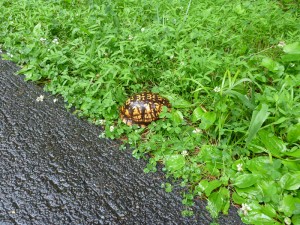
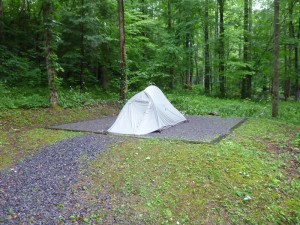
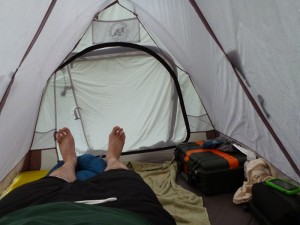
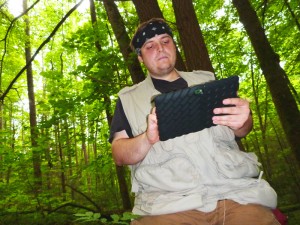
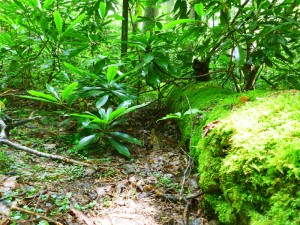
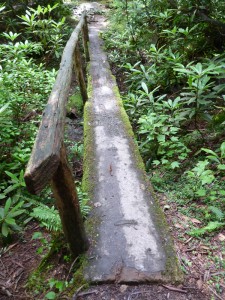
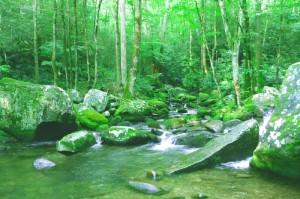
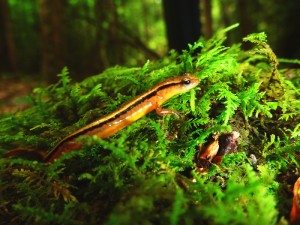
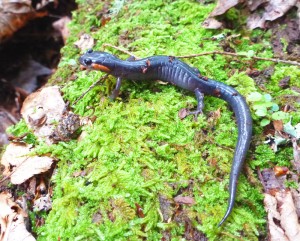
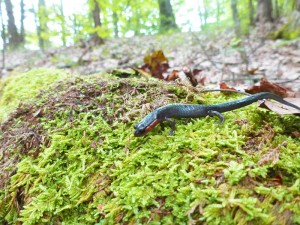
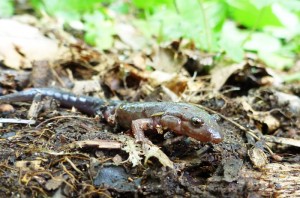
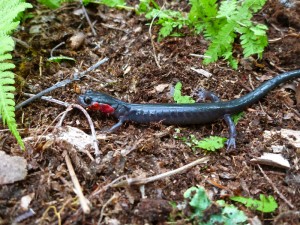
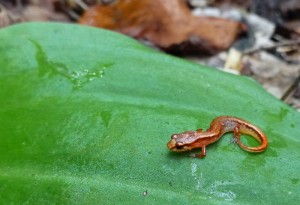
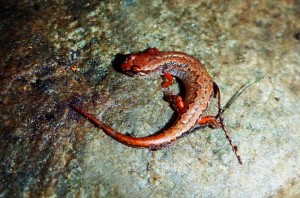
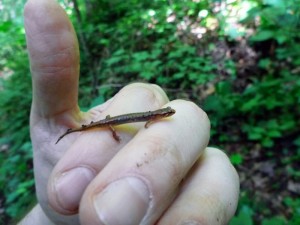
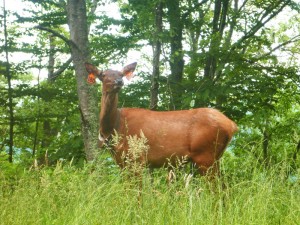
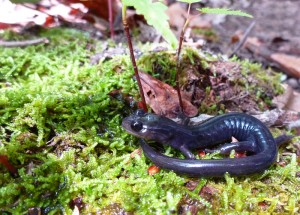
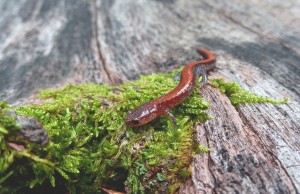
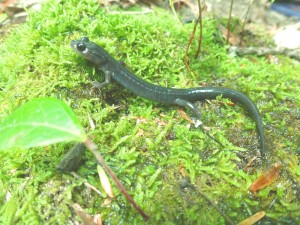
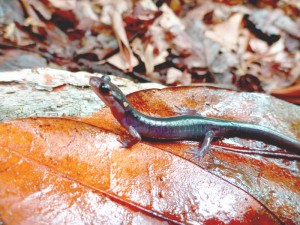
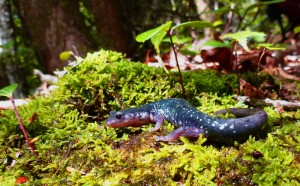
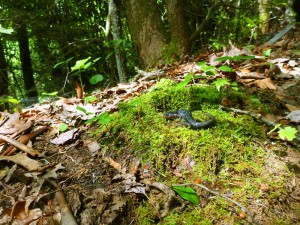
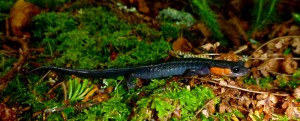
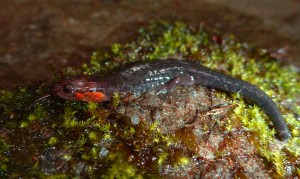
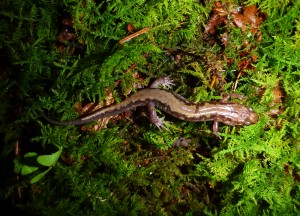
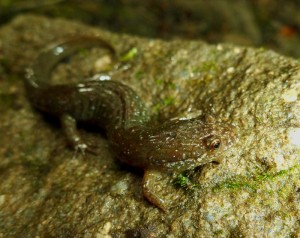

Add A Comment